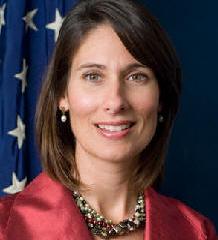|
|||||||||||
|
|
|
|||
|
By Mike Mitchell |
||||
 |
May 27, 2010 -
National Transportation Safety Board Chairman Deborah A.P. Hersman on
Wednesday told the leaders of the nation's regional airlines to find new
methods to solve old problems. Speaking before the Regional Airline
Association national convention in
Hersman noted
that, while regional airlines are becoming an increasingly important
segment of the nation's airline industry, they also have come under
increasing scrutiny. Although the rate of fatal accidents involving Part
121 carriers (encompassing virtually all scheduled airlines) today is
half what it was just ten years ago, some recent high-profile accidents
like the 2006 Lexington wrong runway takeoff crash and the 2009 crash on
approach to the Buffalo airport have raised questions about minimum
standards, professionalism, pilot training and qualifications. |
|||
|
|
||||
|
Beyond the
overarching tragedy of the lives lost in those two crashes, Hersman
noted that the entire industry rises or falls on its safety record.
"This fact could not have been clearer after the [
Hersman said that
RAA member airlines need to explore new approaches to solve old problems
like pilot fatigue, which has been on the Board's Most Wanted List of
Transportation Safety Improvements for 20 years.
As an example, she cited a trucking company that invested in
sleep apnea screening, which resulted in a reduction in preventable
crashes by 30 percent, and an incidental decline in monthly health care
costs of almost $540.
Hersman reminded her audience that the Safety Board will host a symposium in October to discuss issues related to code sharing agreements between major airlines and their regional partners. ?It is remarkable how far this industry has come. Despite the post 9/11 challenges and the economic crisis of the last few years, the industry continues to demonstrate its resilience. And yet ? despite the significant strides we have made in safetyI know everyone here agrees that we need to do more. Despite all the improvements, we are still seeing system failures that can have tragic consequences. |
||||
|
"Unfortunately, during my time on the Board, I have been involved in the NTSB?s work on the last two fatal scheduled airline accidents which have involved regional carriers ? the Lexington/ Comair Flight 5191 wrong runway takeoff accident, and the Colgan Air/Buffalo loss of control accident. These tragedies have turned the intense focus of media and Congressional attention on the safety of our commercial airlines and in particular, on regional carriers. We can debate whether that is fair or not, but what?s not debatable is that some of the recent accidents were preventable.
"As most of you
know,
Colgan Air Flight 3407 crashed five nautical miles short of the
runway at
"In some ways, the
Colgan Air crash was a watershed event, in that it brought into the
harsh spotlight a number of issues that have been quietly plaguing the
industry for decades. NTSB?s investigation into Flight 3407, which
concluded earlier this year, determined that the crash was due to poor
pilot performance. The
tragic loss of life was only compounded by the fact that it was a
recoverable accident.
"And even while
the NTSB was still gathering the facts, the media, the Congress, and the
family members of victims, raised some questions about the industry.
Questions about pilot performance, commuting, fatigue, training,
and the relationship between mainline carriers and their regional
partners have all been a part of the congressional and Safety Board
investigations.
"From the Safety
Board?s perspective, our investigation revealed a number of issues in
this accident that have been of concern to the Board for a number of
years. For example, the
issues of fatigue and commuting were highlighted by the actions of this
crew. The captain had spent
the night before the accident in the crew room ? against company policy.
And the first officer had flown through the night prior to the
accident in the jumpseat of a cargo flight from
"Our investigation
revealed other significant factors that contributed to this accident,
including:
?
The captain?s inappropriate response to the activation of the
stick shaker;
?
The flight crew?s failure to monitor airspeed;
?
The captain?s failure to adhere to sterile cockpit procedures;
?
The captain?s failure to effectively manage the flight;
?
And inadequate procedures for airspeed selection and management
during approaches in icing.
"We all have a
responsibility to learn from these preventable mishaps.
And I?m particularly pleased to see that the accident has
refocused the industry and the FAA?s attention on some of the issues
that the Safety Board has been raising for several years, including
flight crew monitoring, pilot performance, sterile cockpit violations,
fatigue, training, record keeping, use of personal electronic devices,
and safety alerts.
"If we want pilots
to be better at monitoring, we need to revise procedures.
If we want to address how much rest pilots get, we have to
address commuting. If we
want pilots to be at the top of their game, we need to adequately train
them. And if we want to
raise the bar, we can?t simply require industry to meet a safety
?floor.?
"When the Safety
Board concluded our hearing on Colgan, I made a comment that it felt
like the movie ?Groundhog Day.?
What I meant was that the issues we discovered in our
investigation were nothing new.
We?ve long known about them, and in fact the NTSB has
longstanding recommendations on many of them. |
| Other News Stories |
|
|
| ?AvStop
Online Magazine
Contact
Us
Return To News
|
|


